Ahn Chang-hong has built his own independent art world, not swayed by any current trends. As part of the celebrations for the 60th anniversary of diplomatic ties bet-ween Korea and Ecuador, his exhibition, held in Ecuador in 2021, continued this year at the Savina Museum of Contemporary Art in Seoul.
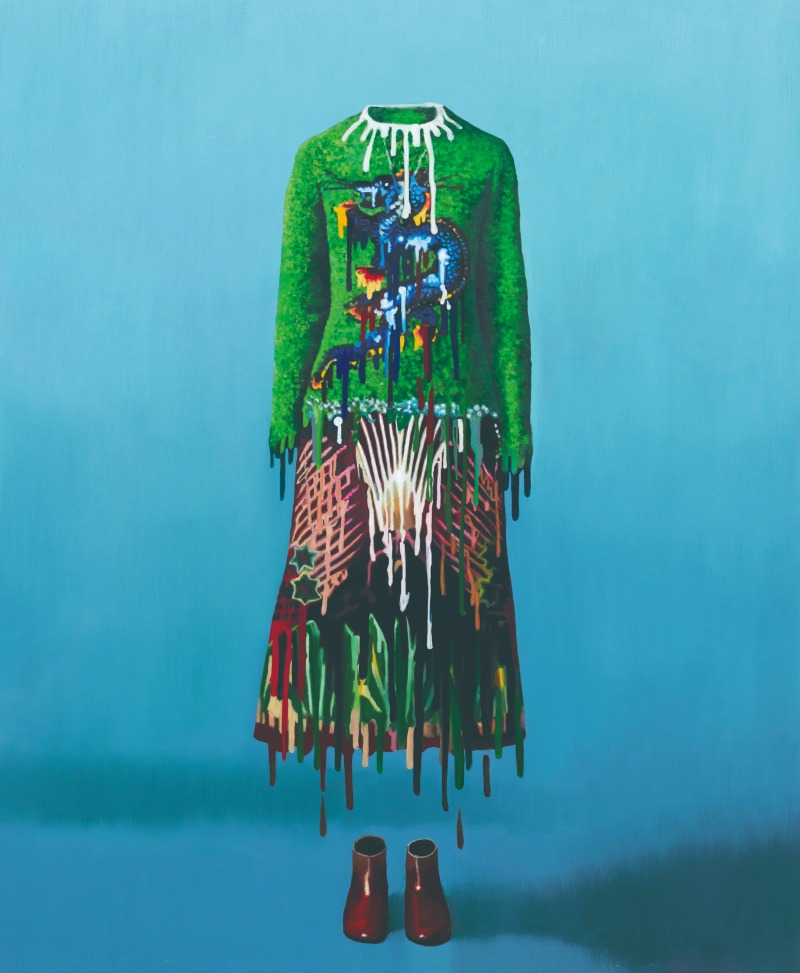
“Ghost Fashion 2021-19” 2021. Oil pastel on cotton paper. 162.2 × 112.1 cm.© Savina Museum
The northern part of Seoul, where the peak of Mt. Bukhan is visible, is home to an art museum in the shape of a triangle. This is the Savina Museum of Contemporary Art, an important private art museum in Korea. From February 23 to May 29 this year, the museum hosted the solo exhibition “Ghost Fashion” by Ahn Chang-Hong. Introducing the artist’s latest works and new endeavors, the exhibition was special as it formed part of the cultural exchange events commemorating the 60th anniversary of diplomatic ties bet-ween Korea and Ecuador.
Before delving into “Ghost Fashion,” another exhibition must be mentioned first. In the winter of 2020, at the peak of the COVID-19 pandemic, the solo exhibition “National Painter of Ecuador: Oswaldo Guayasamín” was held at the Savina Museum. The works of Guayasamín (1919-1999), who is highly respected not only in his home country but all over Latin America, are preserved and designated as national heritage of Ecuador. The first showing of his art in Korea moved viewers and left them in awe.
As a reciprocal event, Ahn Chang-Hong held a special exhibition in Ecuador at the Casa Museo Guayasamín and La Capilla del Hombre, or the Chapel of Man. This is where Guayasamín’s masterpieces are on permanent display, and Ahn is said to be the first artist from another country to have held an exhibition there since the Spanish master Francisco Goya.
A Style of His Own
Ahn Chang-hong, born in 1953, is an artist with a free spirit and a fierce mindset. His oeuvre over the past 50 years proves this. He has remained unbound by any system or framework and his steadfast pride as an artist has kept him going.
Korea is a country highly obsessed with education, and the competition to enter a good art school is fierce. But rejecting the standardized admission system, Ahn decided not to study art in college. As such, he created his own style at an early age, distancing himself from the broader institution of art. The result has been a body of work that is mature in form and serious in theme, and which critically views problems such as the alienation of human beings and the need for justice in history.
Many art critics in Korea consider Ahn a very idiosyncratic artist. Removed from the group-centrism, camp logic and academism of the domestic art circle, he expresses the tragedies of individuals in history using personal narratives. He is also recognized for his distinct personality, critical awareness of society and differentiated formative characteristics. The selection of materials, themes and expressive methods that embody his works are also varied and free. His latest works, the “Ghost Fashion” and “Mask” series, can also be understood in this context.
“Ghost Fashion”
Ahn said he was very moved by the Oswaldo Guayasamín exhibition at the Savina Museum. When it was decided that his own solo exhibition would be held in Ecuador, he worked intensively to complete his “Ghost Fashion” series. Consisting of oil paintings on large canvases, the series actually began very small. Ahn collected images of fashion models on the internet, drew on them using a digital stylus pen on a smart device and made digital prints of the results, creating a new field of “digital pen drawings.” Then he went a step further and recreated the images in the most traditional way – that is, using oil paints and brush on canvas. His work is a combination of technology and art, digital and analog techniques. The poses taken by the models in this series vary widely, just as there are various ways of living human life, and the clothes they wear are colorful and arresting. But the key is that the faces, hands and feet of the models have been erased. The body disappears and only the clothes remain, like a ghost whose body and soul have escaped to leave only the shell behind.
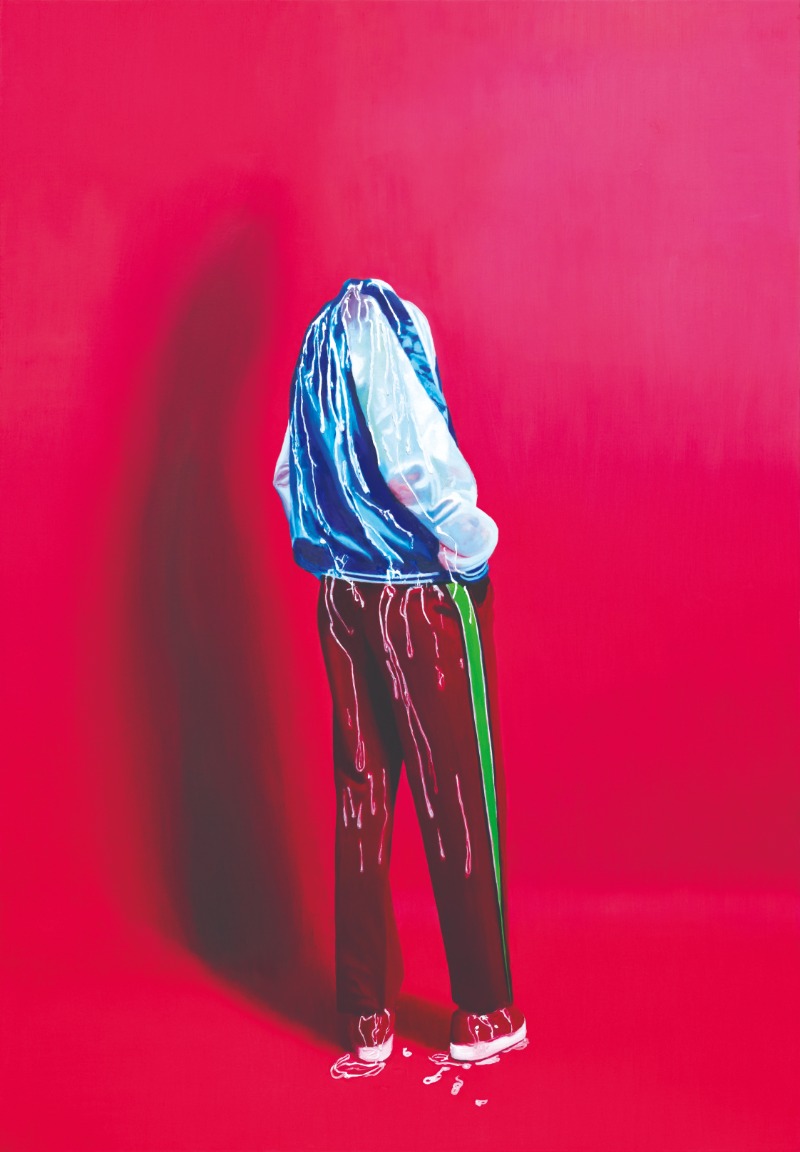
“Ghost Fashion 2021-1” 2021. Oil pastel on cotton paper. 162.2 × 112.1 cm.
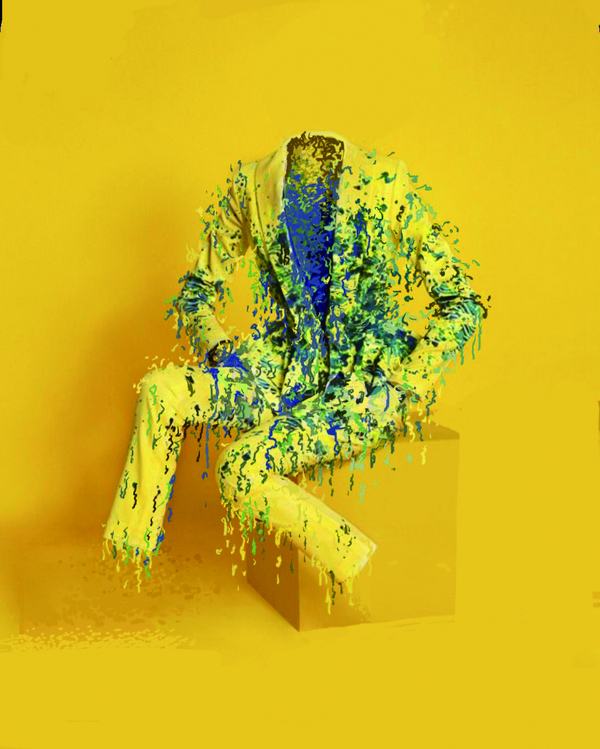
“Ghost Fashion 2022-1” 2022. Oil on canvas. 162 × 133 cm.
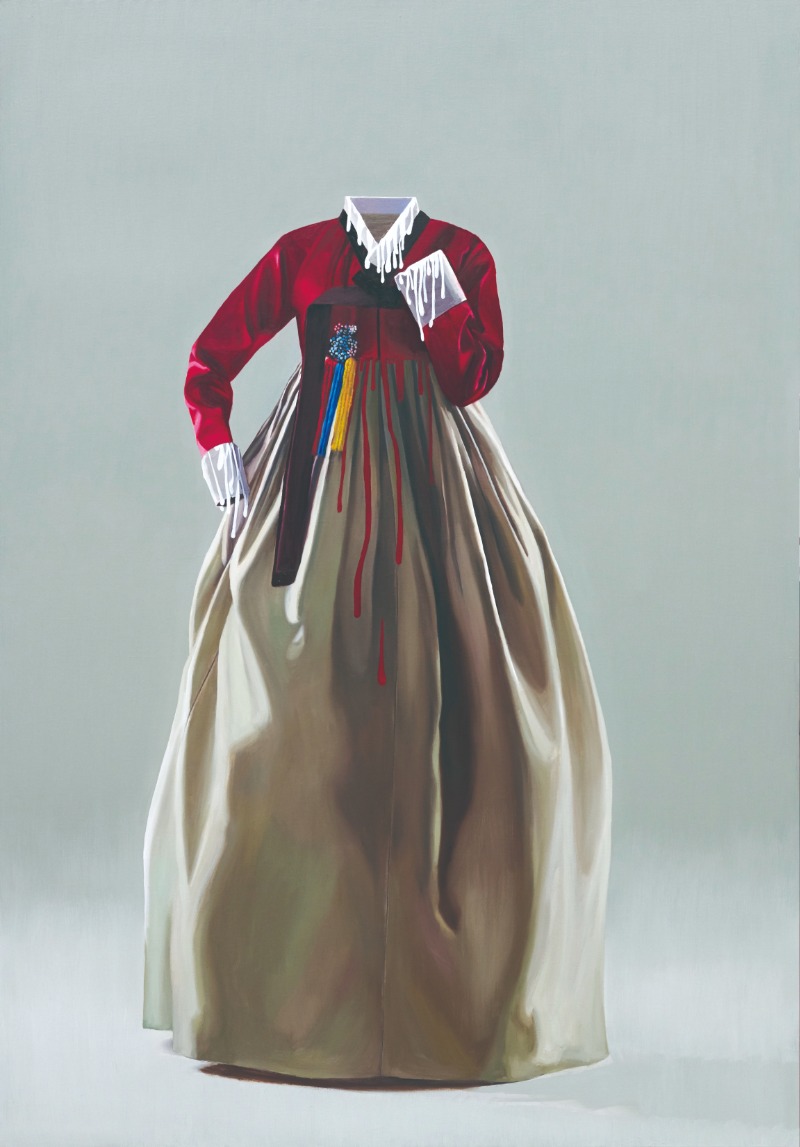
“Ghost Fashion 2021-10” 2021. Oil pastel on cotton paper. 162.2 × 112.1 cm.
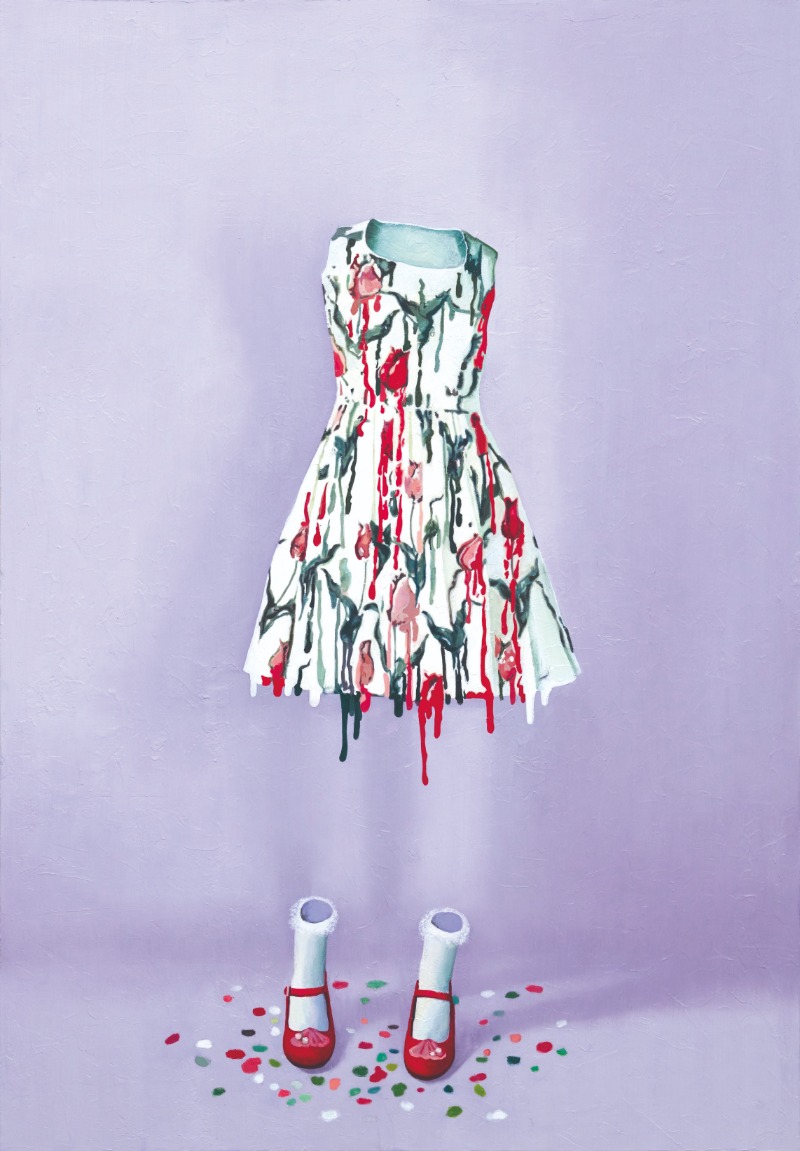
“Ghost Fashion 2021-8” 2021. Oil pastel on cotton paper. 162.2 × 112.1 cm.
“Mask”
Underlying all of Ahn Chang-hong’s works is a keen interest in and affection for human beings. The human manifestation is the face, which contains various emotions, from hope and a longing for life to pain and despair over growing old, falling ill and dying. The French philosopher Gilles Deleuze clearly differentiated the “head” from the “face.” For example, animals also have heads, but theirs differ from human faces because the head of an animal has no expression. In other words, the human face is a special body part that bears expressions.
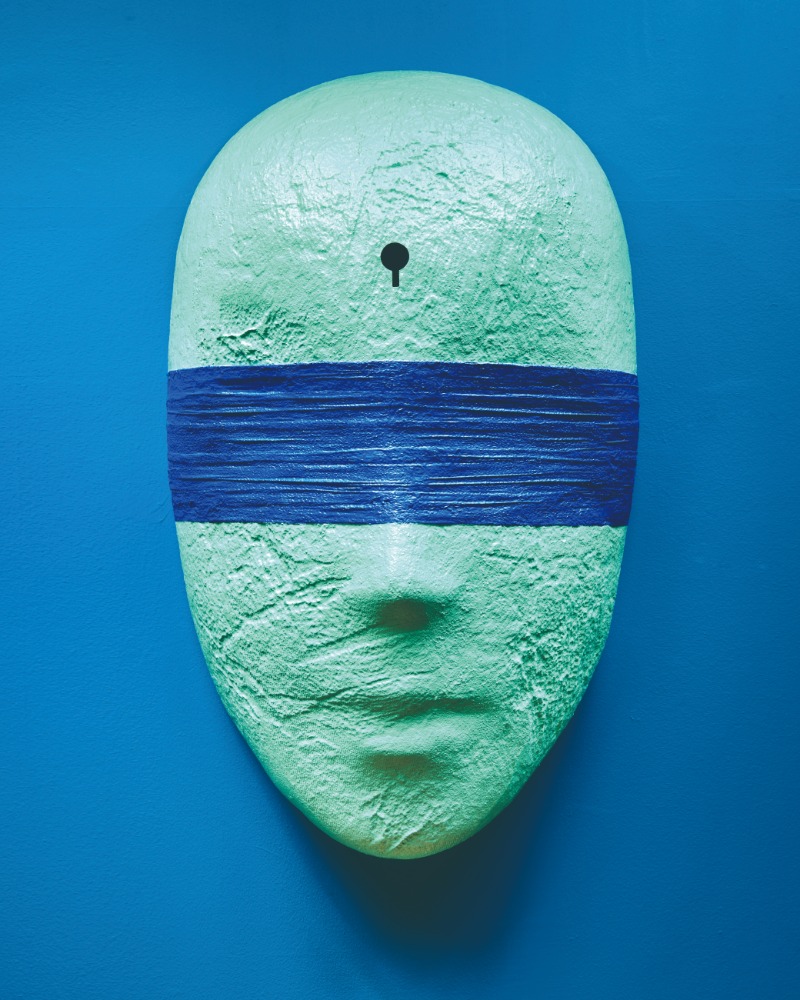
“Mask 2019-14” Mixed Media on FRP.(HWD) 155 × 110 × 50 cm.
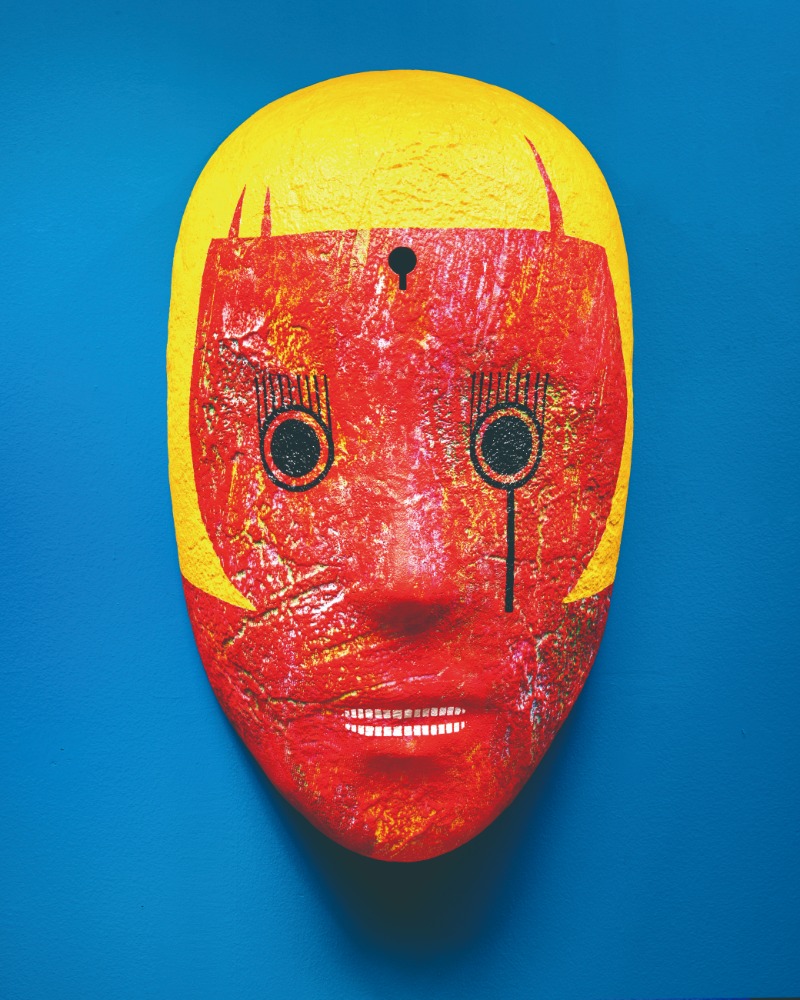
“Mask 2019-23” Mixed Media on FRP.(HWD) 155 × 110 × 50 cm.
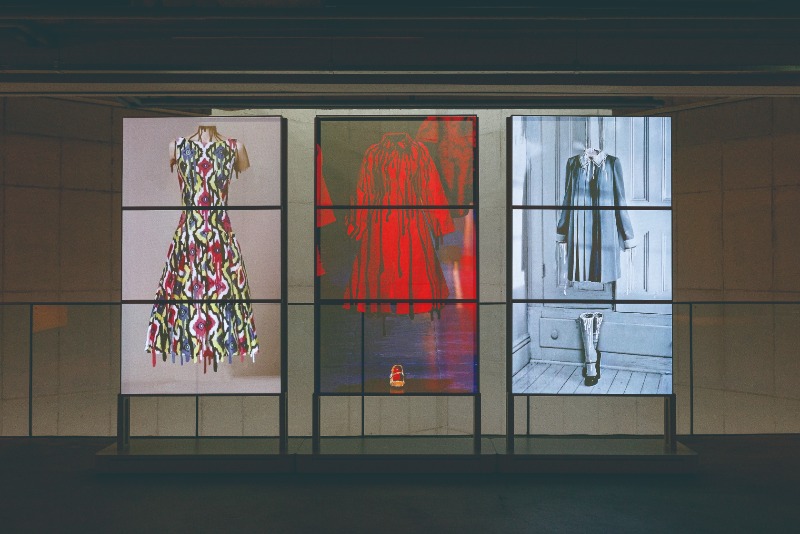
On the third floor of the museum, visitors can see 150 digital pen drawings through a transparent display.
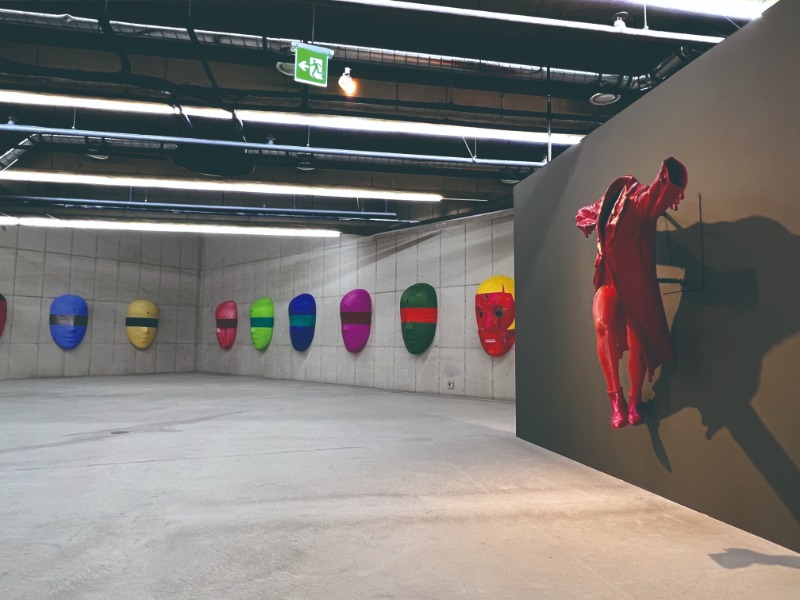
On display on the second floor are 23 works from the “Mask” series and three 2D paintings scaled up to 3D.
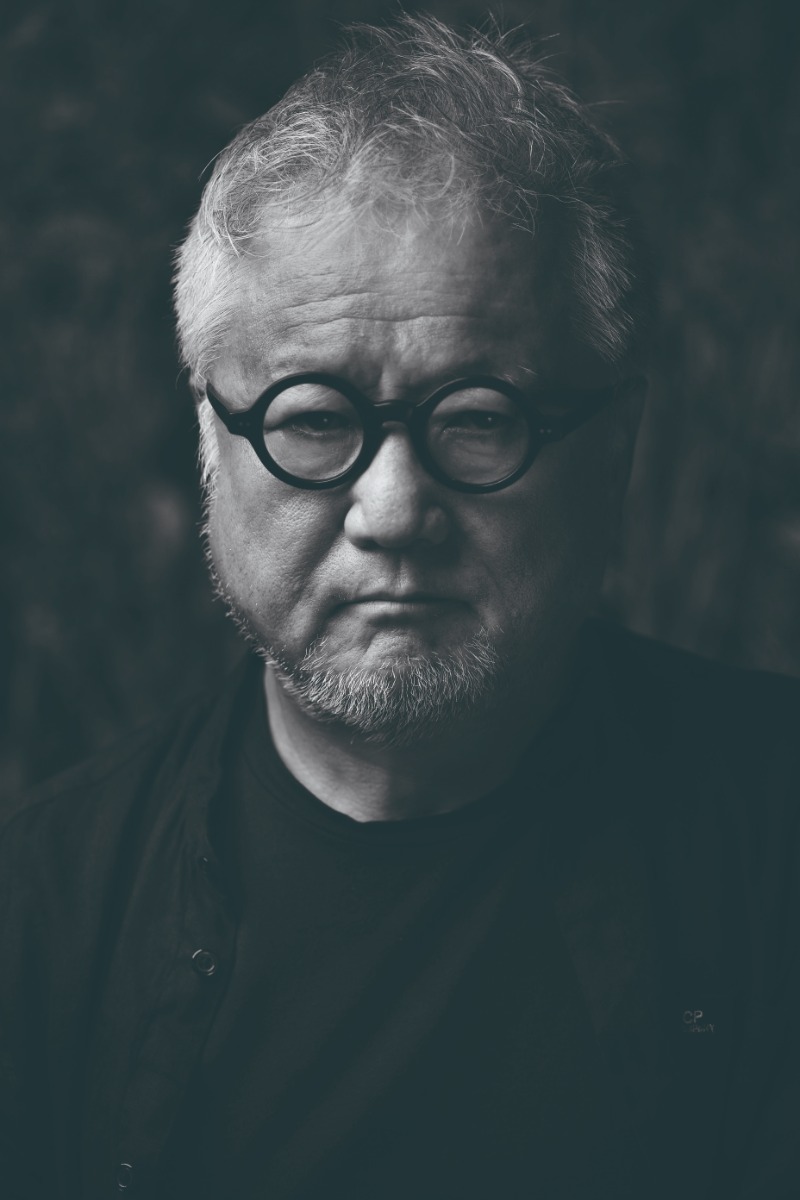
Ahn Chang-hong, one of Korea’s most important artists today, built his own distinct art world with no regard to any system or rules.
Of course, emotions can be sensed from other parts of the body, such as how the rough hands of workers or farmers might betray lifelong toil, or bent shoulders might signal fatigue. However, with the eyes, nose and mouth, it’s the face that reveals human emotions most directly. The eyes are especially important because the messages they deliver can be interpreted in various ways. In this context, the “Mask” series is made up of powerful, symbolic works that provoke thoughts about the face, and therefore, about human beings.
“The ‘Mask’ series is the story of a crazy world. People are turning ignorant, collectively selfish and violent, and they all run toward a seemingly noble cause with ulterior motives. The series is about this collective unconsciousness. The bandages that cover the eyes and the keyhole on the forehead symbolize the lost self and the unconsciousness. Their lives are like duckweeds, each decorated in beautiful colors, but floating like ghosts upon a closer look. Through ‘Mask,’ I wanted to express the dual phenomenon of us destroying ourselves or being destroyed by others because we have succumbed to the sophisticated conspiracy of capital and power, and allowed greed to get the better of us. After all, we are both subjects of greed and its victims at the same time,” the artist said.
Hard hit by COVID-19, the world is called upon to reflect on greedy capitalism and humankind as a desire-driven species. Oswaldo Guayasamín was a pioneer when he expressed his thoughts on humankind and the historical pain experienced in Latin America, and Ecuador in particular, during the 20th century. In the same vein, Ahn Chang-hong also contemplates the problems facing mankind in the 21st century. The works we come across at the Savina Museum of Contemporary Art are self-portraits of the modern man, splendid on the outside but empty on the inside.
Exhibited on the fourth floor of the museum are about 100 of Ahn’s drawings, sketches for his oil paintings and large-scale installations. His excellent drawing skills are evident. From small drawings, he has crossed almost all boundaries in art, venturing into oil painting, digital pen drawing, installation art and photography. These works are the precious outcome of a passionate spirit unafraid to challenge himself.